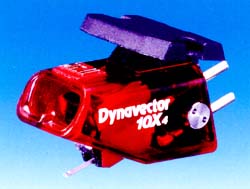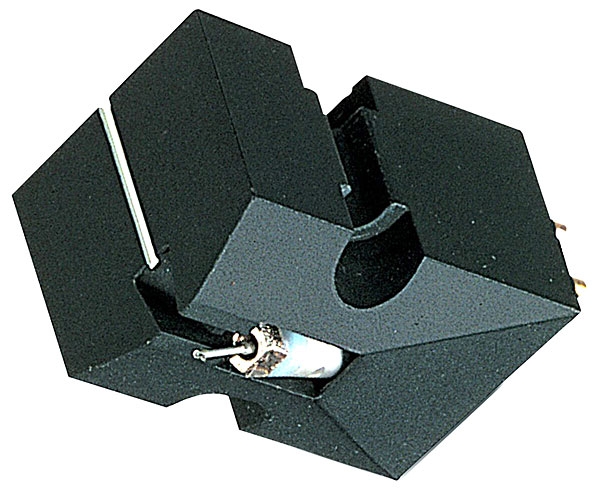Serious audiophiles used turntables as their primary music source back in the mists of time, when hi-fi was as widespread as mobile phones are now. Upgraders should buy the greatest possible design available, which generally meant a single speed Scottish deck, according to the publications of the day. This necessitated the development of good but inexpensive partnered tonearms and cartridges to be used while bank accounts recovered from the shock of making the single largest outlay outside of a home and a car.
Moving magnet cartridges still controlled the roost, with companies like Shure, Ortofon, and Grado selling a lot of them. The Ultimo 10X, a direct descendant of Dynavector’s £199 DV-10X4 Mk II, provided an interesting alternative to audiophiles by 1978. This was a moving coil for the price of a mediocre moving magnet, with a somewhat high output that allowed it to be used without the need for a separate moving coil stage. Professor Noburu Tominara, the device’s creator and a top expert in micro coil winding technology, made this possible. His custom-designed winding machine used extremely fine wire, resulting in class-leading output-to-mass ratios and allowing the 10X to be mass-produced. In 1978 and 1981, it was awarded the Design and Engineering Award at CES Chicago.
Despite the small company’s limited marketing budget, the 10X has gained a devoted following among audiophiles on a shoestring budget. This variant has a smaller, elliptical nude diamond stylus with a higher output of 2.5mV (at 1kHz, 5cm/sec). The compliance rate is 1210-6cm/dyn, and the cartridge weight is a manageable 4.6g. All of this combines to make the infant Dynavector a user-friendly option that pairs well with arms like Rega’s RB300. I tested it on a Michell GyroDec driving a Michell Dino phono stage in both a Rega RB600 and a Linn Ekos for this review.
Surprisingly, it sounds really close to how I recall the old Ultimo. Whatever genre of music you perform, it has a lot of energy. Surprisingly, the 10X4’s power isn’t derived from an Audio Technica-style brightness and zing; rather, it’s a rich and fruity sounding device. No, it has a firm grasp on the foundations of any recording, ensuring that you never stop tapping your feet from start to finish.
When you play Crosby, Stills, and Nash’s Wooden Ships on an original US pressing, the entire track sounds very engaging. Rather than getting bogged down in the weeds of production details and the like, it just jumps right in and has a blast. You’ll hear more detail, nuance, and elegance with Ortofon’s very capable, similarly priced MC25E, but you won’t be tapping your feet half as much. A harsher and colder tonality will also be heard, which is potentially more realistic but far less appealing.
When you play current discs like Thomas Dolby/Ryuichi Sakamoto’s Fieldwork, the DV10X4 shines even brighter. For a cartridge this inexpensive, there’s a lot of strength and energy in the bass — you’d never guess it’s only £80 more than Goldring’s excellent 1042 moving magnet. Although there’s no true detail at the rear of the recorded acoustic, the soundstage is vast and all-encompassing. The DV10X4 appears to give you more bang for your buck than its Ortofon competition, despite the fact that its dynamics are superb for the price. The treble is the only true letdown, as it is completely listenable but fairly bland — the cymbals sound reasonably smooth and realistic but a little too ‘generic’.
When it comes to rock, the Dynavector loves to boogie — it’s completely unafraid and just ‘gets down on it’ without hesitation. Any song that is a slave to the rhythm, feisty, gregarious, and joyful, is where this cartridge belongs. However, if you ask it to pick out tiny textural distinctions between instruments in acoustic recordings of symphonic compositions, it becomes all timid. Basically, the DV10X4 isn’t up to the task of digging deep interior grooves, but then again, what cartridge is at this price?
The joy of this small transducer is its big-hearted, musical nature, which cleverly hides its flaws. It’s not a Linn Archiv, but then then, you wouldn’t expect it to be. Rather, it’s a lot of fun to play music with, so you don’t mind if there’s no low-level ambient information, spatial precision, or texture detail. It’s undoubtedly the most entertaining of its price rivals, making it the greatest ‘budget audiophile’ cartridge on the market right now. Anyone looking to upgrade from moving magnets and get a taste of the top end should make every effort to try this out.







